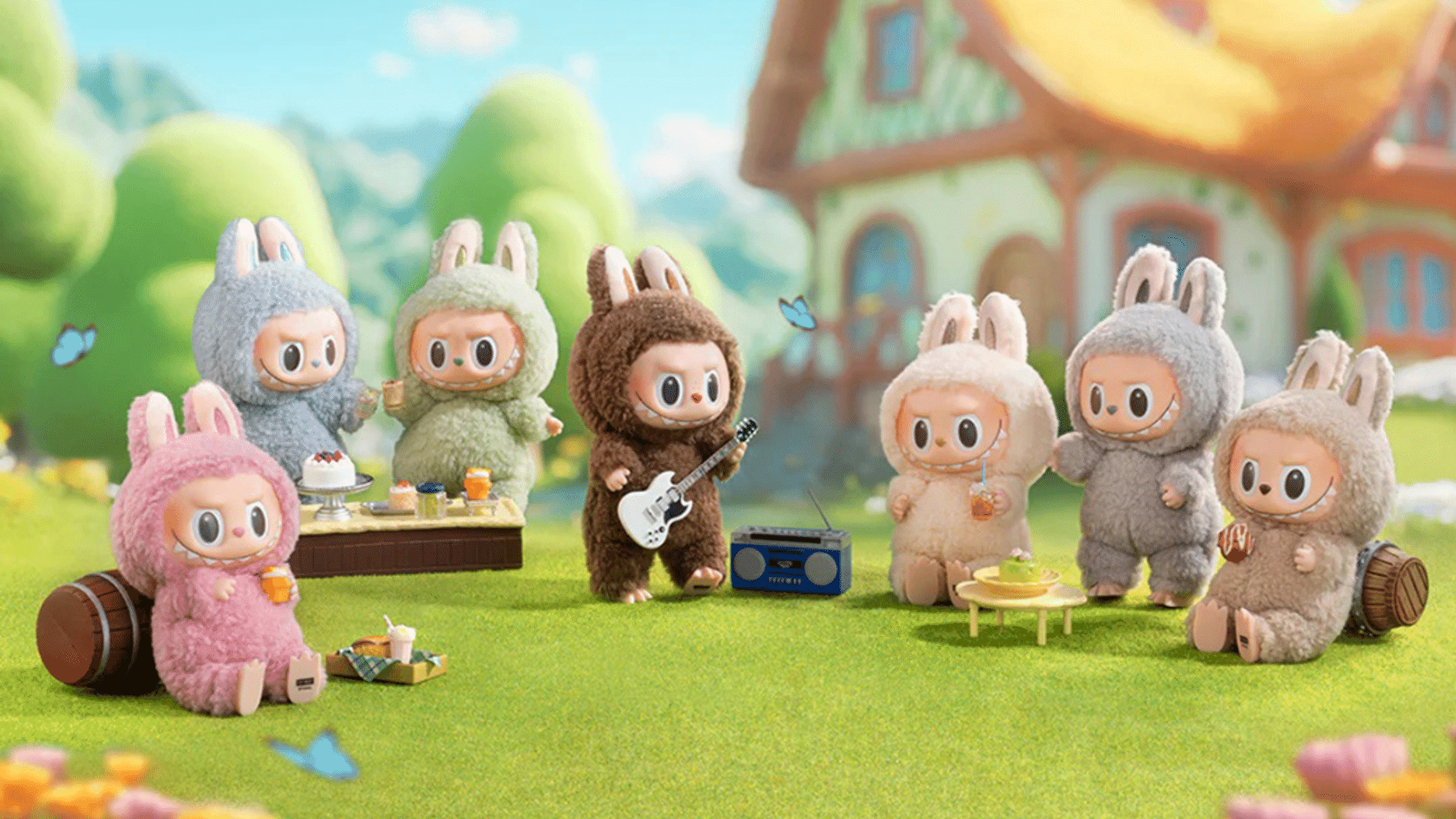Plushies to Purses: How Luxury Brands Can Capitalize on the Jellycat and Labubu Trend
In 2025, the world is obsessed with Jellycat plushies and Labubu collectibles. These quirky, affordable toys—often dangling as bag charms—have become cultural phenomena, with Labubu driving a 726.6% revenue surge for Pop Mart in 2024 and Jellycat maintaining a cult following. Their rise reflects deeper shifts in consumer behavior: economic uncertainty, a craving for nostalgia, and a desire for individuality. For luxury brands, traditionally tied to high-end handbags, this trend offers a blueprint to create new products or categories that resonate with today’s consumers, particularly Gen Z and Millennials. Here’s how luxury brands can harness this moment to innovate.
Understanding the Jellycat and Labubu Trend
The popularity of Jellycat and Labubu is no fluke—it’s a response to economic and cultural currents. Amid inflation and recession fears, consumers are embracing the "lipstick effect," opting for affordable indulgences over big-ticket purchases. Priced at $13–$30, these toys offer emotional uplift without breaking the bank. Labubu’s blind-box model, where rare figures fetch up to $150,000 on resale markets, creates a thrill of scarcity, while Jellycat’s soft, nostalgic designs evoke childhood comfort. Social media supercharges their appeal, with 1.2 million #Labubu TikTok posts and celebrity endorsements from Rihanna and Lisa of Blackpink turning these toys into fashion statements.
This "kidult" trend—adults embracing playful, collectible items—reflects a shift toward emotional connection and self-expression. Consumers want products that feel personal, shareable, and tied to community, whether through viral TikTok videos or collector groups. The global rise of Asian pop culture, with Pop Mart earning 38.9% of its 2024 revenue overseas, further underscores the demand for culturally diverse aesthetics.
New Consumer Needs: What’s Driving the Shift?
Affordable Luxury: Economic uncertainty pushes consumers toward low-cost items that feel special, like Labubu’s collectible charms or Jellycat’s plushies.
Nostalgia and Emotion: The "kidult" movement shows adults seeking comfort and joy in nostalgic products that evoke simpler times.
Scarcity and Exclusivity: Limited editions and blind-box models create urgency and social capital, rivaling traditional luxury’s exclusivity.
Social Media Clout: Products must be photogenic and shareable to enhance digital identities on platforms like TikTok and Instagram.
Global Cultural Relevance: The influence of K-pop, anime, and Asian brands demands products that resonate with globalized tastes.
How Luxury Brands Can Leverage This Trend
Luxury brands, often synonymous with $5,000 handbags, can create new products or categories by adapting the strategies behind Jellycat and Labubu. Here are actionable ways to meet these consumer needs:
1. Launch Affordable, Collectible Accessories
Opportunity: Introduce a new category of luxury accessories, like branded bag charms, keychains, or miniatures, priced to attract younger buyers ($50–$200). These items can retain the brand’s premium aesthetic while being accessible.
Example: Gucci could release a series of whimsical charms inspired by Labubu’s quirky aesthetic, crafted with high-end materials like leather or gold accents. These could be sold in randomized packs to mimic the blind-box excitement.
Impact: Affordable accessories meet the demand for small, emotionally rewarding purchases, allowing brands to capture budget-conscious consumers without diluting prestige.
2. Create Scarcity-Driven Collectibles
Opportunity: Develop limited-edition or serialized products to replicate the scarcity that drives Labubu’s resale market. For instance, a numbered series of handbag straps or charms could create urgency and collector appeal.
Example: Chanel could launch a capsule collection of bag charms with randomized designs, each tied to a specific cultural theme (e.g., Parisian art or K-pop motifs). Rare pieces could be exclusive to certain markets or events.
Impact: Scarcity fulfills the need for exclusivity and social capital, encouraging repeat purchases and boosting brand buzz on social media.
3. Infuse Nostalgia into Product Design
Opportunity: Design products that evoke childhood or cultural nostalgia, blending luxury craftsmanship with playful aesthetics. This could extend beyond accessories to limited-run handbags or apparel.
Example: Louis Vuitton could create a handbag line inspired by retro toys or cartoons, using bold colors and embossed patterns to channel Jellycat’s charm. Marketing could emphasize emotional storytelling, like memories of childhood play.
Impact: Nostalgic designs address the "kidult" craving for comfort, fostering deeper emotional connections with consumers.
4. Embrace Global Cultural Influences
Opportunity: Partner with Asian designers, influencers, or brands to create products that reflect the growing influence of K-pop and anime. This could include collaborations with figures like Blackpink’s Lisa or brands like Pop Mart.
Example: Dior could collaborate with a K-pop star to design a limited-edition handbag or charm collection, incorporating anime-inspired motifs or vibrant colors that resonate globally.
Impact: Culturally relevant products appeal to diverse audiences, positioning brands as leaders in a globalized market.
5. Optimize for Social Media and Digital Engagement
Opportunity: Create photogenic, shareable products that shine on TikTok and Instagram, paired with influencer-driven campaigns to maximize visibility.
Example: Hermès could design a bold, charm-compatible handbag with customizable elements, encouraging buyers to share their unique combinations online. Partnering with TikTok influencers could amplify the campaign.
Impact: Social media-optimized products meet the need for digital clout, ensuring luxury brands remain aspirational in crowded online spaces.
Challenges to Consider
Balancing Prestige and Accessibility: Affordable products must maintain the brand’s luxury aura to avoid dilution. High-quality materials and limited runs can help.
Authenticity: Consumers, especially Gen Z, reject inauthentic trend-chasing. Collaborations and designs must feel genuine and aligned with brand heritage.
Sustainability: Ethical production is a growing priority. New products should use sustainable materials or transparent supply chains to meet consumer expectations.
The Future of Luxury: A New Category Emerges
By embracing the Jellycat and Labubu playbook, luxury brands can create a new category of affordable, collectible, and emotionally resonant accessories that complement their core offerings. These products—whether bag charms, serialized straps, or nostalgic handbags—can capture younger audiences, drive social media engagement, and align with global cultural shifts. The success of Labubu and Jellycat proves that consumers crave joy, individuality, and accessibility, even in luxury. Brands that innovate now will not only survive but thrive in this evolving landscape, turning a $20 charm into the next must-have status symbol.






